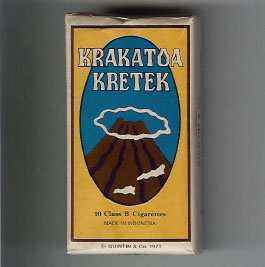
This story first appeared at the Miller-McCune website.
In June, President Obama signed a law requiring tobacco companies to post large, graphic warnings on cigarette packs. Current cautionary statements such as “Smoking causes lung cancer, heart disease, emphysema” and “Smoking is dangerous to your health” will gradually be replaced with more ominous assertions, including “Cigarettes cause fatal lung disease,” “Cigarettes cause cancer” and the refreshingly blunt “Smoking can kill you.”
But regulators may want to rethink this ashes-to-ashes theme. New research suggests that, for a certain set of smokers, those allusions to death may actually increase the likelihood they’ll light up.
That’s the conclusion of a paper published in the Journal of Experimental Social Psychology, which questions the effectiveness of anti-smoking campaigns that emphasize mortality threats. The researchers, led by psychologist Jochim Hansen of New York University and the University of Basel, suggest a campaign that dispels the belief smoking makes one cool or attractive could be more effective in getting at least some smokers to quit.
Hansen and his colleagues looked at cigarette pack warnings from the perspective of Terror Management Theory, which was developed in the mid-1980s by psychologists Tom Pyszczynski, Jeff Greenberg and Sheldon Solomon. It contends that our awareness of our own deaths creates the potential for extreme anxiety, which we keep at bay by reaffirming faith in our belief systems (which give our lives a sense of meaning) and maintaining a high level of self-esteem.
Reasonably enough, the researchers assert that for some people, smoking is a facet of their positive self-image. They consider the habit sexy or attractive, or perhaps a proud example of their rebellious spirit.
For those individuals, terror management theory suggests mortality-laced warning labels could be counterproductive. The threat to one’s life would presumably result in an urge to pump up one’s self-esteem—which, for those individuals, could easily mean a renewed commitment to smoking.
To test this concept, the researchers conducted a study of 39 smokers, ranging in age from 17 to 41. Participants filled out a questionnaire designed to measure the degree to which they base their self-esteem on smoking. They then were presented illustrations of a cigarette pack containing a warning message.
Half of them read warnings that spoke of the life-threatening consequences of smoking, such as “Smoking leads to deadly lung cancer.” The other half read warnings that did not involve mortality, such as “Smoking makes you unattractive.”
Following a 15-minute delay in which participants answered questions unrelated to smoking (so that the warning messages would leave their conscious minds), they answered a final set of questions including “Do you enjoy smoking?” “How important is smoking to you?” and “Are you going to smoke a cigarette directly after this study?”
The researchers found that, among those who associated smoking with self-esteem, the death-related warnings actually led to more positive attitudes toward cigarette use. They concluded the smokers clung more tightly to their habit as “a strategy to buffer against existential fears provoked by death-related warning messages.”
On the other hand, for these same people, the non-death-related warnings had a dampening effect on attitudes toward smoking. Warnings that smoking makes one less attractive “may be particularly threatening to people who believe the opposite,” they report.
The researchers admit it is impossible to know what percentage of smokers tie their self-esteem to the health-impairing habit. Thus, for the population at large, “it is difficult to predict whether a death-related or a death-unrelated warning message would be more effective,” they write.
“Yet one could speculate that certain populations base their self-esteem on smoking to a higher degree than others—for instance, young smokers who want to impress their peers,” they add. “If this turns out to be true, a consequence of our findings would be that such populations should be warned against noxious consequences of smoking with death-neutral messages.”
So those unfiltered warnings that are on the way may be counterproductive with the group the government is trying hardest to target: young smokers. Like previous research on the Montana Meth Project, the study is a reminder that death threats will capture people’s attention, but how they impact behavior is a much more complicated question.














